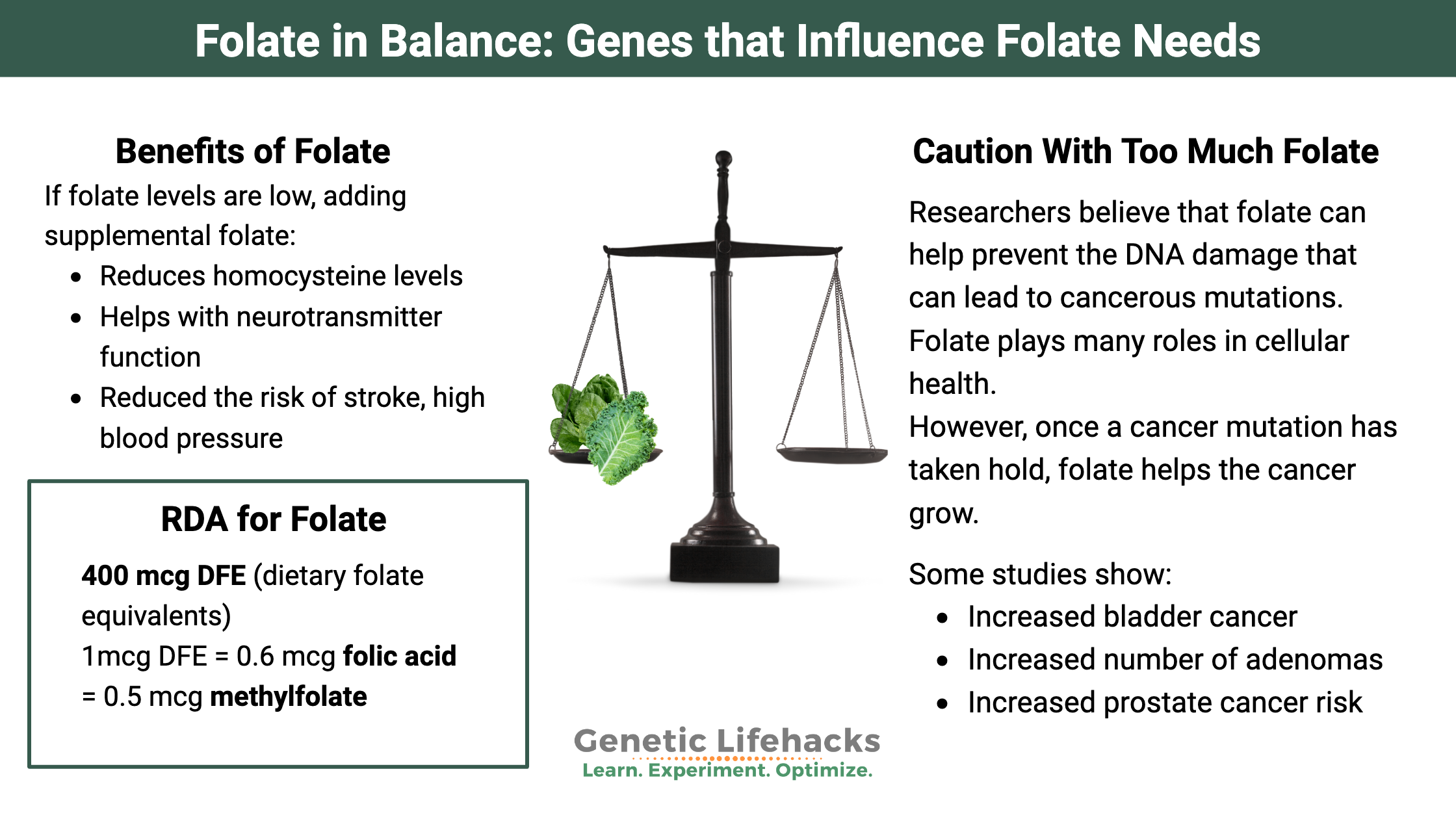Key takeaways:
~ Balance is key with folate.
~ Having enough folate helps to protect against cancer.
~ Excess folate is linked to the growth of tumors.
What is the connection between folic acid or other folates and cancer growth?
Folate is needed for cells to replicate, which is one reason it is so important to get enough during pregnancy and why it is included in prenatal vitamins. However, rapid cellular growth is also a hallmark of many types of cancer. Tumors that grow and divide rapidly also thrive when folate is abundant. In fact, one of the first successful anti-cancer drugs was an anti-folate drug that blocks cancer cell growth by reducing folate.[ref]
Folate is often the limiting factor for DNA synthesis, which puts it in a key position to both help prevent DNA replication errors (preventing cancer) but also allowing for unchecked growth (proliferation once a cancerous mutation has developed). In addition, folate receptors are often upregulated in cancerous cells.[ref]
Thus, the balance of getting enough folate for your individual needs is important. Often, there is a focus on dramatically increasing folate levels with certain genetic variants, such as MTHFR.
Here’s an example that may surprise some of you:
The MTHFR C677T variant, which reduces the synthesis of methylfolate (active folate), is associated with a bunch of negative health outcomes. Many clinicians immediately recommend high doses of methylfolate.
But… carrying two “bad” copies of the MTHFR C677T variant also significantly reduced the risk of colon cancer and a number of other types of cancer.[ref][ref][ref][ref]
For example, a meta-analysis found that two copies of the C677T variant (AA genotype) decrease the risk of colon cancer by about 20%. Another meta-analysis found that two copies of the C677T variant (AA genotype) were protective against prostate cancer.[ref]
Here are your MTHFR variants (read the full article here on MTHFR):
| Gene | RS ID | Effect Allele | Your Genotype | Notes About Effect Allele |
|---|---|---|---|---|
| MTHFR C677T | rs1801133 | A | -- | 40-70% decrease in MTHFR enzyme function (folate metabolism) |
| MTHFR A1298C | rs1801131 | G | -- | 10-20% decrease in MTHFR enzyme function (folate metabolism) |
Why is the C677T variant protective against cancer?
The MTHFR C677T variant causes the enzyme to be more thermolabile and breaks down more quickly at normal body temperature. This means that there isn’t as much enzyme available to convert folate into methylfolate. The methyl groups from methylfolate are used in a bunch of ways in the body – one of which is in the synthesis of DNA during cellular replication.
How much folate is needed?
In the US and much of the world, folic acid is added to cereals, bread, enriched white rice, and anything with wheat (pizza, pop-tarts, cookies, crackers, etc). Folic acid is a synthetic form of folate that is stable in foods and during baking.
For reference, a serving of Cheerios has 235 mcg of added folic acid, a serving of bread has ~150 mcg of added folic acid, and a cup of enriched white rice has ~100 mcg of added folic acid.[ref]
Scenario:
Suppose your breakfast is 1 c. of Cheerios, lunch includes a sandwich with two slices of white bread, and your dinner is burrito (in a flour tortilla) with white rice — you would be getting more than 500 mcg of added folic acid in addition to any natural folate in the food.
The US RDA for folate is 400 mcg/day DFE. DFE stands for dietary folate equivalents (DFE). The tolerable upper limit is set at 1,000 mcg/day from supplements or fortification (limit for adults, lower for teens and children).[ref]
What are dietary folate equivalents?
The DFE refers to how supplemental forms of folate equate to folate that you get from food. Food folate is equal to one dietary folate equivalent (DFE), which makes sense. Folic acid and methylfolate are more available to be absorbed in the intestines.
Here’s how they are factored:
1 DFE = 1mcg of folate from food = 0.6 mcg folic acid or 0.5 methylfolate
Back to my scenario: If you eat breakfast cereal, a sandwich with two slices of enriched bread, and a burrito with rice for dinner (totaling at least 500 mcg of folic acid), you end up with 833 mcg DFE just from added folic acid.
If you find out about a MTHFR variant and decide that you need a methylfolate supplement, the most common supplement dosage you’ll find is 1 mg. (1 mg is 1,000 mcg, equivalent to 2,000 mcg DFE.)
Related articles and topics:

